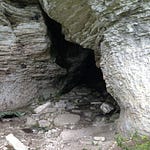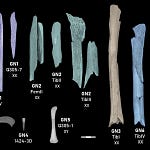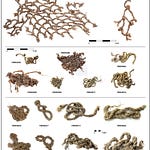A Mortuary Mystery Suspended in Stone
Along the cliff faces of Southwest China, wooden coffins cling to the rock as if gravity never applied to them. Some rest in natural alcoves. Others perch on narrow ledges or hang on wooden stakes driven deep into limestone. For centuries, these “Hanging Coffins” have drawn speculation, admiration, and confusion in equal measure.
The practice has long been associated with the Bo people, a group said to have vanished during the Ming Dynasty. Their supposed disappearance, combined with the sheer difficulty of placing heavy coffins high on vertical cliffs, framed the tradition as a cultural fossil whose makers had slipped irretrievably into the past.

A new genomic study published in Nature Communications1 challenges that narrative. By analyzing the DNA of ancient individuals from Hanging Coffin sites in China and Log Coffin sites in Thailand, alongside thirty modern Bo genomes, researchers argue that the Bo never disappeared. They endured, genetically and culturally, even as the historical record fragmented around them.
Dr. Marina Leung, a population geneticist at the University of Hong Kong, observes: “The genetic continuity between ancient Hanging Coffin groups and present-day Bo communities reflects a cultural lineage far stronger than the historical sources suggest.”
The study reframes the Hanging Coffin tradition as part of a much broader story of migration, interaction, and resilience in prehistoric East Asia.
Listen to this episode with a 7-day free trial
Subscribe to Anthropology.net to listen to this post and get 7 days of free access to the full post archives.








